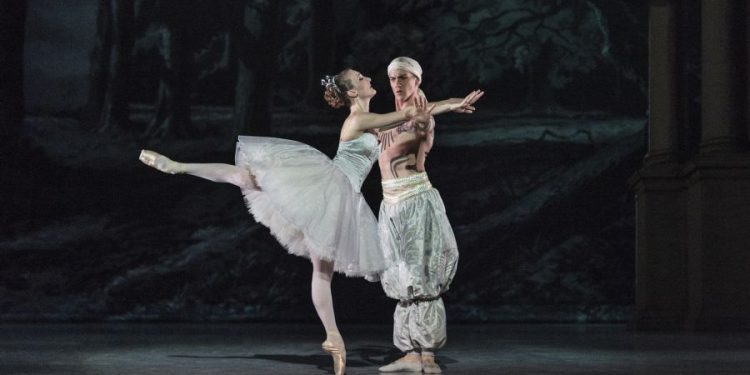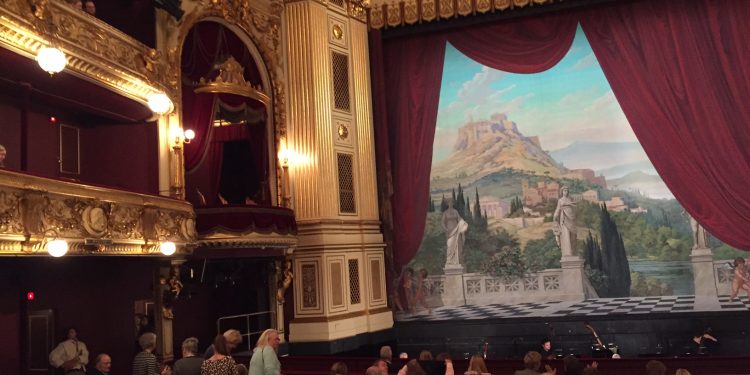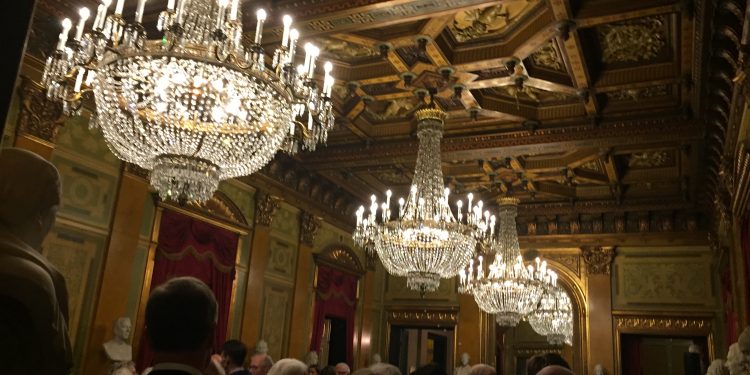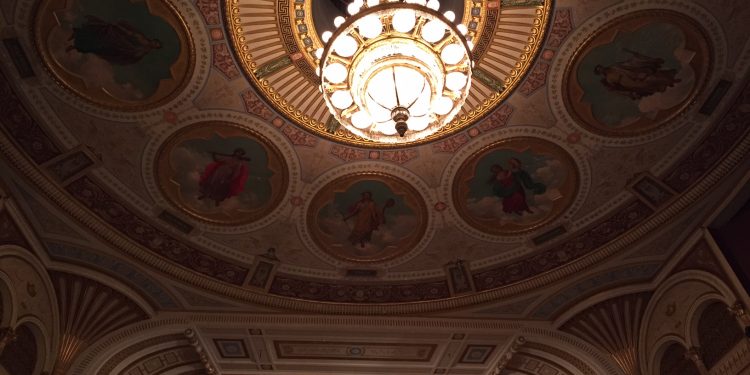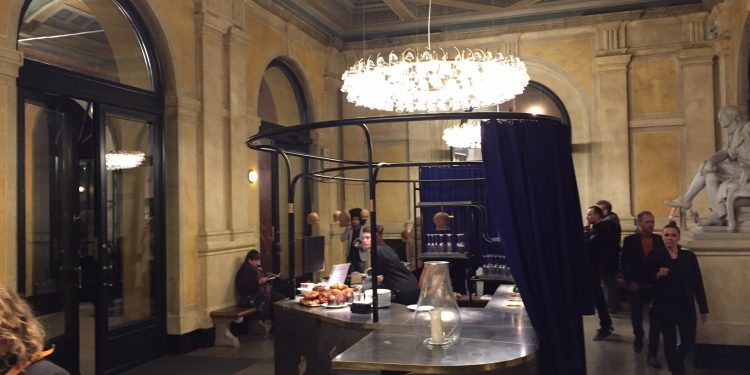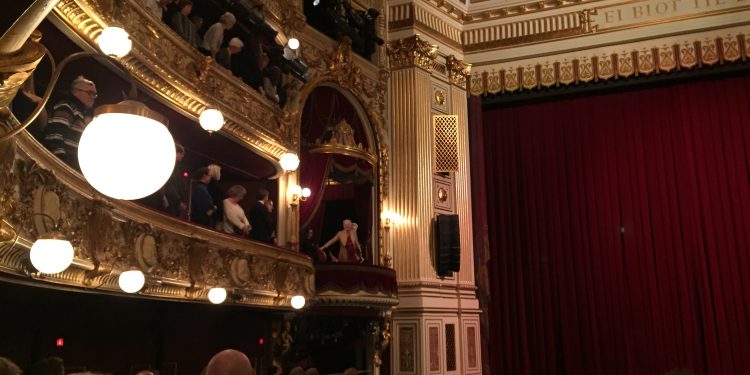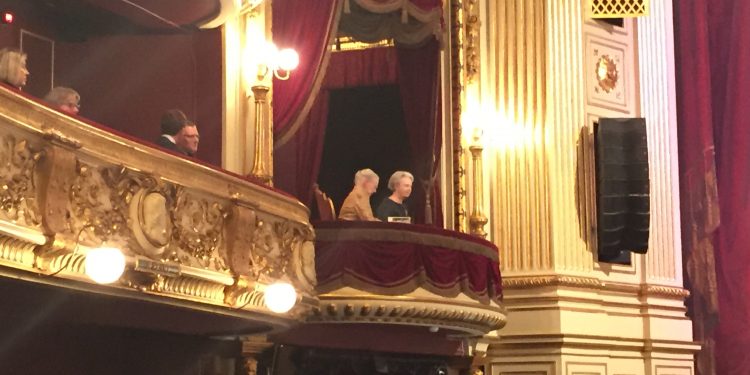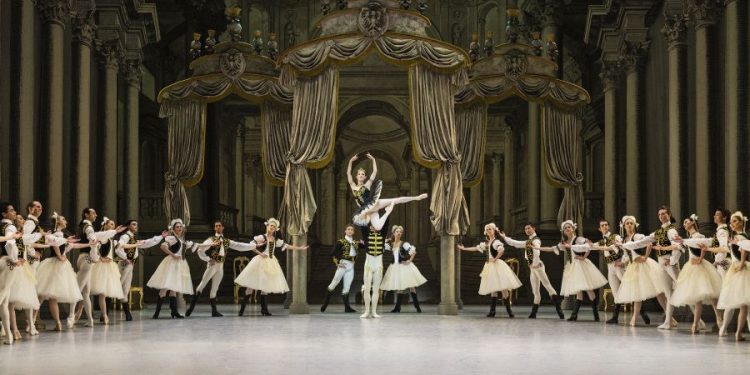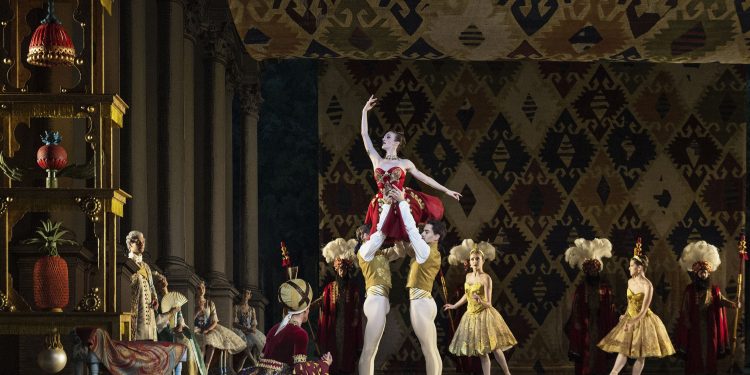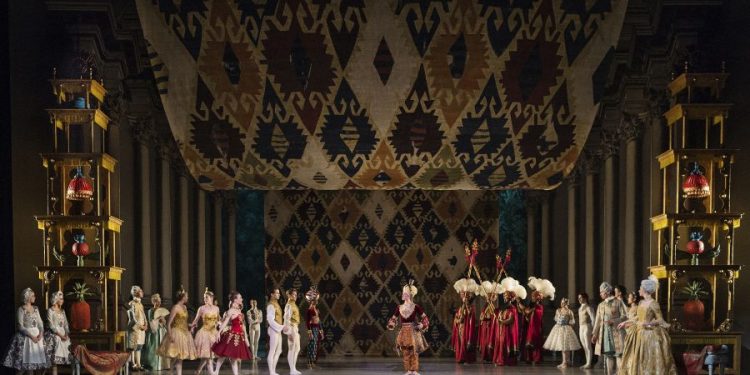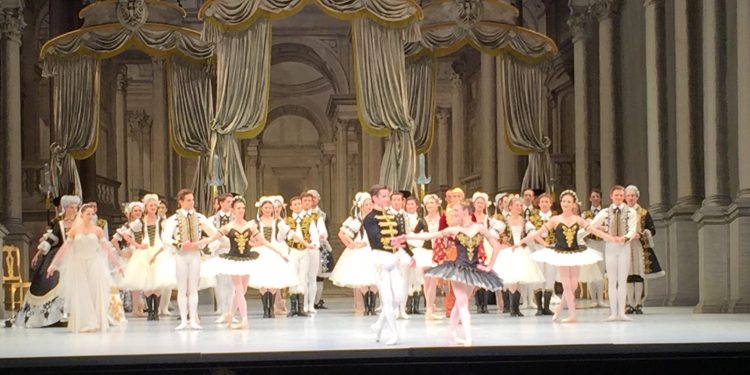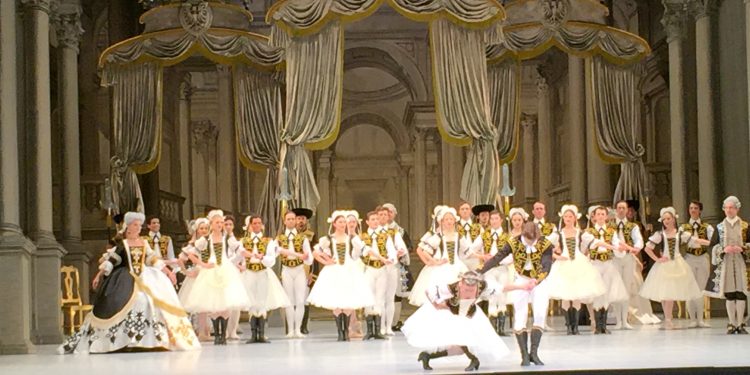An great deal of effort is demanded to put up the classic ballet Raymonda
A first in Denmark, and the last of the masterpieces by Marius Petipa, Raymonda demands great efforts by the Royal Danish Ballet – as ballerinas dance more on their toes in this ballet than in the traditional Bournonville ones.
By Bente D. Knudsen
It is one of those unusual calm autumn evenings as it is really mild and during the intermission people gather on the balcony to get a view of Kgs.Nytorv and the metro building going on.
The old stage’s building on Kgs. Nytorv is not that easy to see from the outside, wrapped up as it is by the metro’s disruptive building site.
However, the inside hasn’t changed and in here you can forget all about the hectic outside world and just focus on a really beautiful old building with gold gilded features, huge mirrors, crystal chandeliers and that special old-timer atmosphere, perfect for a classical ballet performance.
The small café, located on the right hand side of the main entrance, is a great way to start with a quick snack or coffee before the entertainment starts. The bell rings and the old theatre fills up with an expectant audience.
It is a very mixed crowd of old ladies dressed up in their Sunday best, loads of jewellery and full make-up, together with youngsters dressed up in the modern version of Sunday best in their jeans, white T-shirts, wrinkled blazers and white tennis shoes, and of course those who just show up as they are.
No dress code even for a premiere in Denmark.
The article continues below.
The Royal family – with the Queen – are great fans of the Danish ballet, and often at premiers their appearance can be expected. This time the Queen arrives in the royal box accompanied by her sister Princess Benedicte. As the audience scrambles to their feet, so do we.
Queens are greeted standing, and with two intermissions, we are now prepared to get ready to stand when she comes in again. She looks happy, a royal connoisseur sitting next to us remarks.
The orchestra arrives, the music starts and the curtain rises. The show is on.
Raymonda is one of the great, classic pieces of the Russian ballet tradition and on this evening it is being performed for the first time in its entirety in Denmark.
We do not really know what to expect from Nikolaj Hübbe’s version. He has chosen to move the story from the middle ages to the late 18th century rococo of Southern Europe.
As the ballet starts we understand why.
The costumes and the set are absolutely magnificent, and we feel as though we are taking part also in one of those great costume balls, and there is delight for the eyes with colours, magnificent brocades, silk, turbans and tutus, and a few slightly disturbing fabric combinations.
It is really extravagant – designed by Richard Hudson.
The article continues below.
What makes this ballet so special is that it was created as a tribute to the ballerinas, once could almost say it is a feminist ballet, with more solo dances performed by the ballerinas than by their male colleagues. It is also quite demanding – with a great deal on the toe dancing – it strains the feet and the thighs, so my ballet connoisseur explains.
They do it so incredibly effortlessly, it does not look that difficult at all.
The story is simple – and a classic – of two men competing for the love of the same woman. The beautiful Raymonda is betrothed to a Hungarian noble, but a Moorish prince tries to win her favour. He does not succeed and the two men clash with swords on the scene, until at the end, all ends well.
Raymonda is married in Hungary at a magnificent lavish spectacle of a wedding- the ending piece of the ballet.
Raymonda is a spectacular and extravagant piece, and the dancing, and fabulous music by Aleksander Glazunov, makes it a truly mesmerising show.
You cannot help it – a huge smile spreads on your face and you feel good during an evening of beautiful entertainment.
In that sense the choice of putting up Raymonda, as a new ballet for the Royal Danish Ballet’s repertoire, is understandable.
In the classic Bournonville tradition, where ballets should be a divertisement, and joyful entertainment with great music and dancing, it certainly fulfils its goal.
An evening of delightful and uncomplicated entertainment not to be missed – ballet fan or not.
Pictures: Private and Det Kongelige Teater(Henrik Stenberg)


